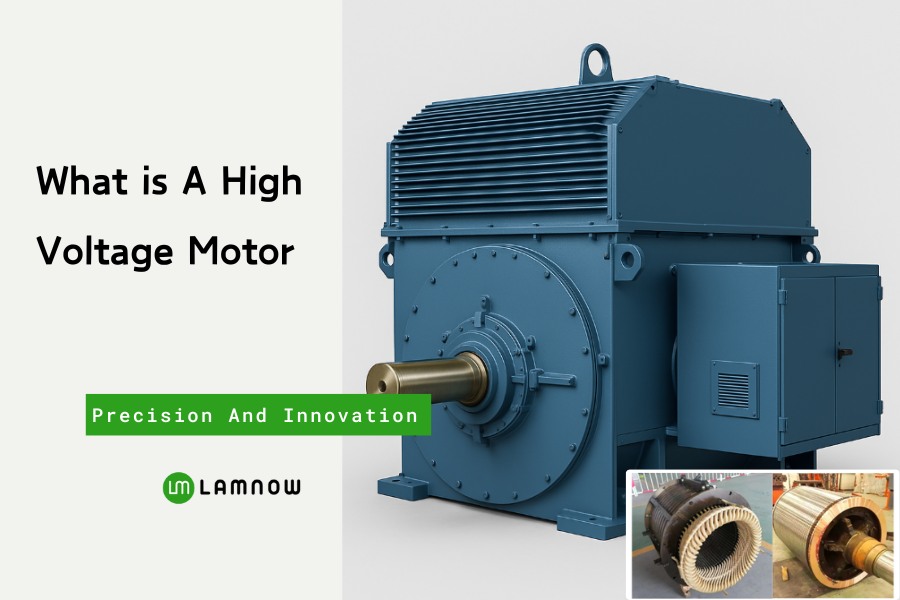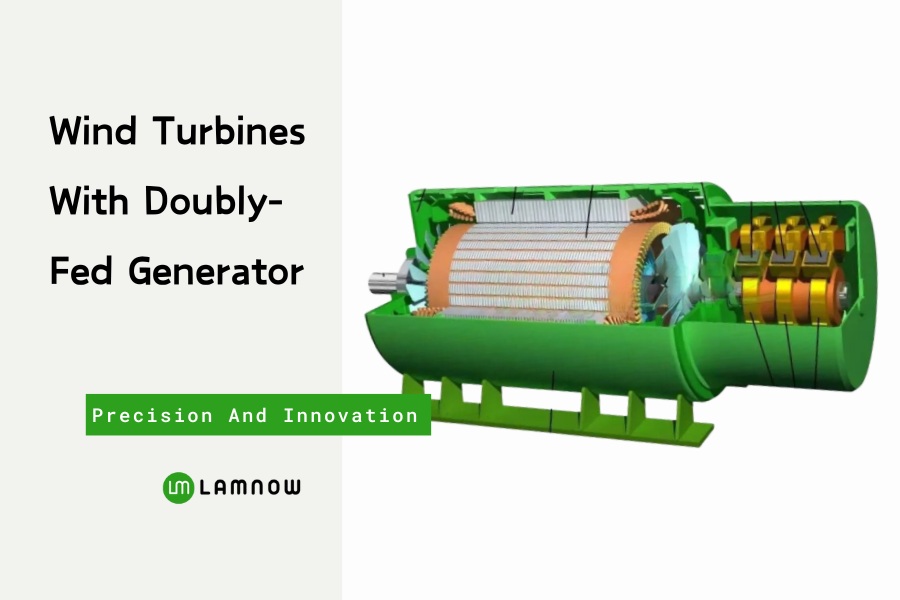Have you ever wondered how the electrical cores that drive large industrial equipment break through the limits of thousands of volts? A high-voltage motor, with its precisely designed mica insulation and vacuum impregnation process, converts copper wire into a safe and efficient energy carrier. Let’s explore the manufacturing secrets of this powerful heart of modern industry!
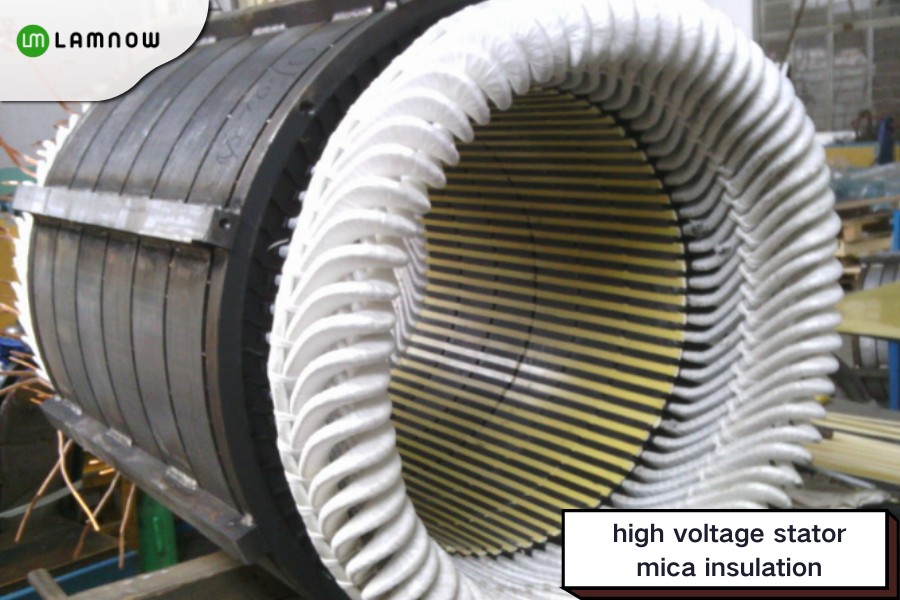
What Are High Voltage Motors?
High voltage motors are named based on their rated voltage — generally referring to motors with a rated voltage above 1000V.
The most common voltage levels are 6,000V and 10,000V, while 3,300V and 6,600V are also used internationally depending on the power grid.
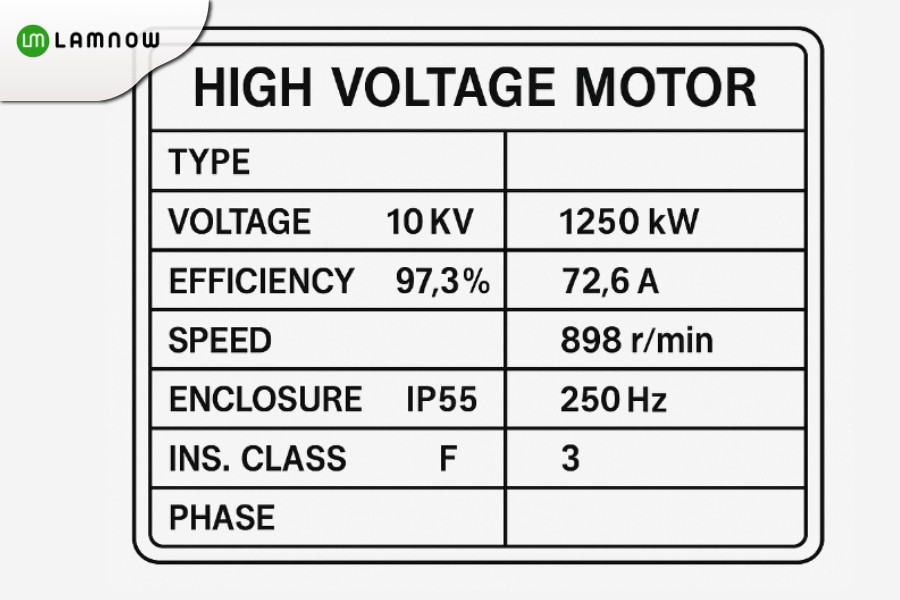
With a power rating of up to greater than 100 MW (or torques up to greater than 40,000 kNm), the specialized high voltage motors are designed to suit the specific requirements of a complex application or to maximize the performance and implementation with an application drive system concept.
Types of High Voltage Motors
asynchronous motors(AC motor)
wound-rotor motors
squirrel-cage motors
DC motors
So what parts does a high-voltage motor consist of?
Structure of a High-Voltage Motor
High voltage motors are essential components in various industrial applications. Whether it’s a squirrel-cage or wound-rotor type, every high-voltage motor consists of the stator, rotor, frame, bearing assembly, cooling systems, and terminal box.
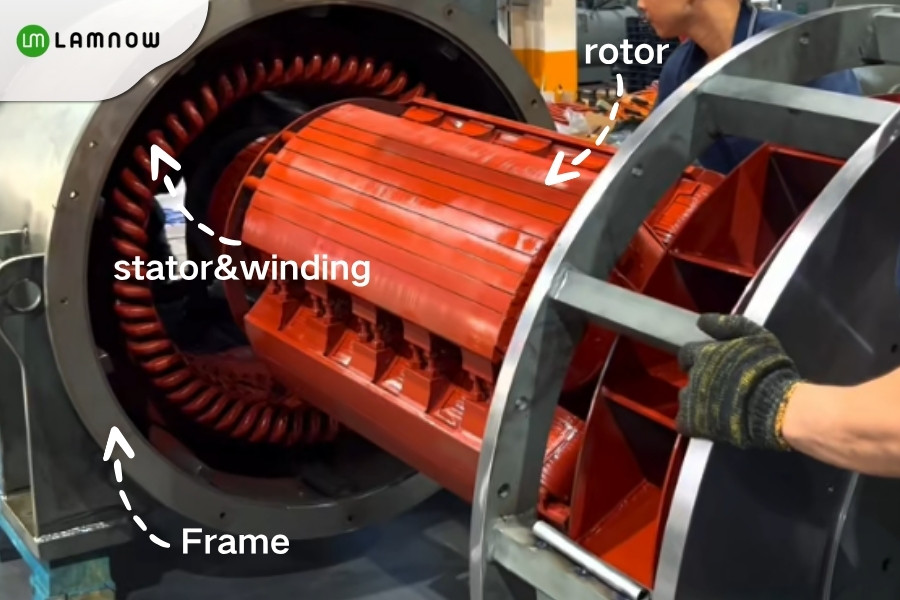
Frame
The suspended-type frame is a rectangular box structure with axial ribs inside to support and position the stator.
The stator is inserted from the top and aligned with the axial ribs using a stator press ring to ensure uniform air gaps, then secured to the frame with bolts.
The end plate’s inner register fits tightly with the end cover’s outer register to maintain precise concentricity between stator and rotor.
The press-fitted frame type, on the other hand, uses a heat-shrink fitting method to mount the stator. This ensures better concentricity but is less convenient to assemble than the suspended type.

Stator
The stator core is usually stacked with 0.5 mm electrical steel sheets, such as 50W470, 50W400, or 50W800.

For special applications, end plates (often made of Q235 steel) are added at both ends.
High-voltage stator cores are made using laser cutting, rotary slot punching, or compound stamping.
Process flow: sheet cutting → laser/slot punching → core welding.
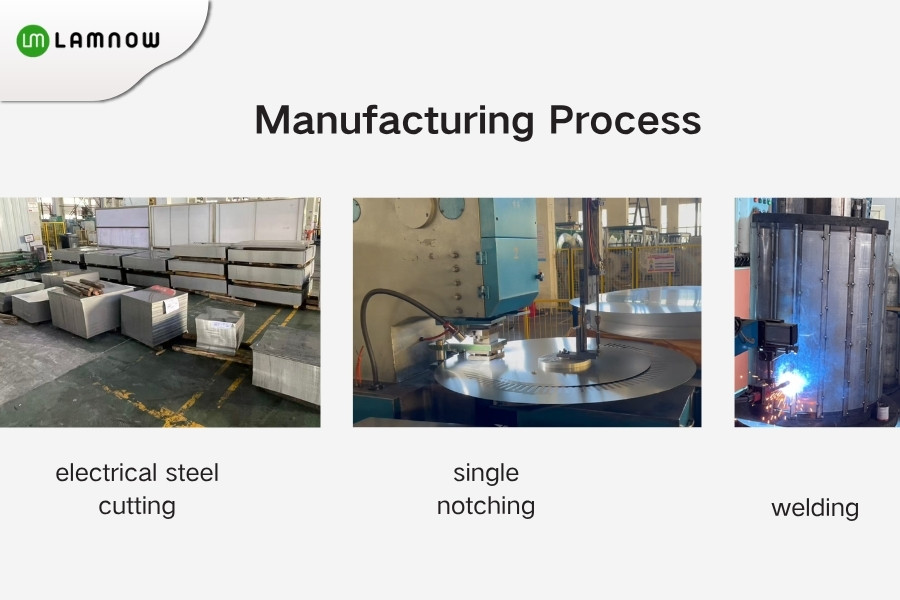
The high-voltage motor windings use double-layer windings with F-class insulation, and motors rated at 3 kV or above include anti-corona protection.

Depending on the voltage grade, different flat enameled wires are selected — such as double-imide, single-imide, or dual-fiber wires.
After material preparation, the wires are wound on a coil-winding machine into shuttle-shaped coils, wrapped with shrink tape or waxed cloth for insulation.
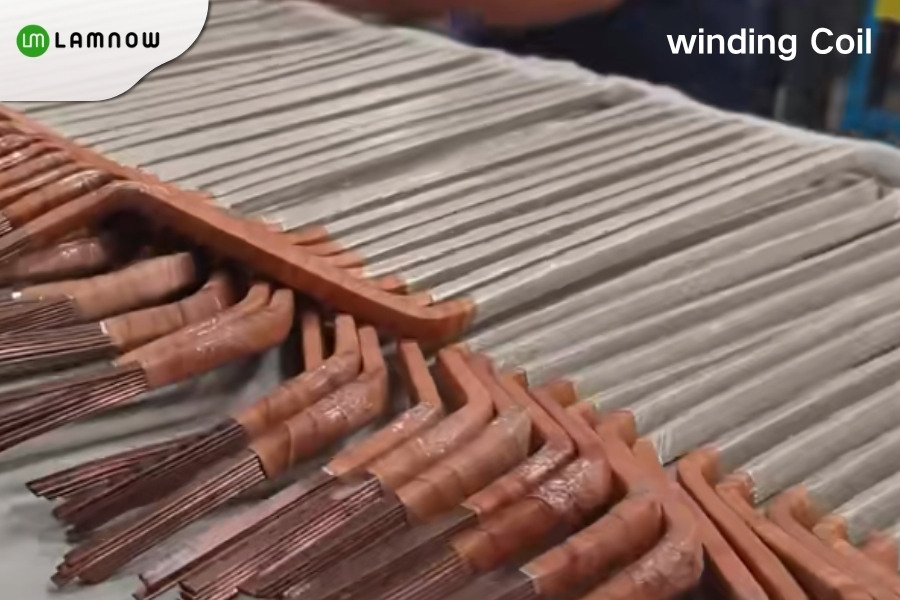
These coils are then shaped into rectangular form coils, aligned to the stator’s inner and outer diameters, and arranged radially. The coil ends are secured with insulating wedges and tied to support rods.
High-voltage motors use vacuum impregnation varnish to ensure full penetration and bubble-free insulation. After impregnation, the coils are dried in an oven:
3 hours at low temperature
18 hours at high temperature
Total 24-hour curing cycle
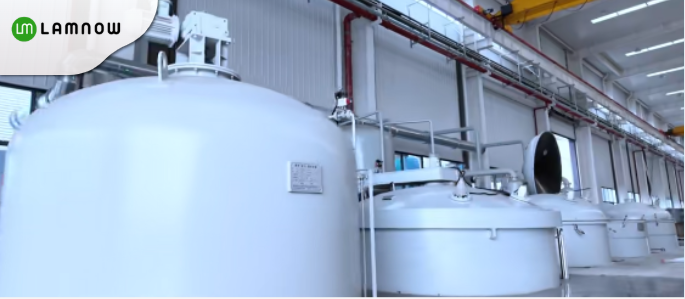
Why Do Most High-Voltage Motor Stators Use Star Connection?
The purpose is to prevent the windings from bearing excessive voltage.
In a star connection, line voltage = √3 × phase voltage, meaning the phase voltage (and thus the insulation stress) is lower than in a delta connection.
Because high voltage motors handle small currents but require high insulation performance, the star connection offers better insulation safety and cost efficiency.
Rotor
The rotor core uses the same materials and manufacturing process as the stator core.
According to the structure, rotors are divided into squirrel-cage and wound-rotor types.
Squirrel-cage rotors usually use cast aluminum bars, known for reliability and good starting performance. For higher efficiency, copper-bar rotors can be used, though they are more expensive.

Wound rotors use double-layer wave windings made of rectangular copper bars with F-class insulation.
Shaft
The shaft is usually welded with spokes and heat-treated to achieve high mechanical strength. Heat treatment is critical — improper processing may lead to shaft fracture.

Slip Rings
Wound-rotor motors are equipped with slip rings on the non-drive end, usually outside the frame.
The protection grade is typically IP23, and can be IP44 or IP54 if needed. Some motors place slip rings inside the frame.
Most high-voltage motors use a non-lifting brush design, where the brushes remain in contact after startup.
Low-voltage large motors (≤380V) may adopt a lifting brush structure.
The number of brushes and lead cross-sections depend on the rotor current. Proper contact between slip ring and brush — including material selection and surface roughness — is essential for performance.
Working Principle of a High-Voltage Electric Motor
The working principle is based on Faraday’s law of electromagnetic induction.
When the stator winding is energized, it creates a rotating magnetic field, which induces current in the rotor and drives it to rotate — converting electrical energy into mechanical energy.
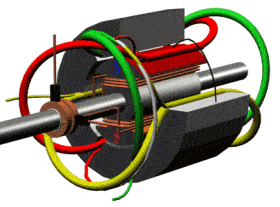
Its high-voltage design (e.g., 6000V) acts like a “power highway,” minimizing energy loss during high-power transmission.
In hydroelectric plants, for instance, it functions as the heart that transforms electrical energy into mechanical force to drive massive turbines.
Applications of High Voltage Motors
High voltage motors are used in numerous industrial and commercial applications, such as wind power motors, the Oil and Gas Industry, Chemical, and HVAC (heating, ventilation, and air conditioning) systems.
Power Generation:
Large wind turbines above 3 MW often use high voltage permanent magnet synchronous or induction motors for efficient generation.
For example, Dongfang Electric and Goldwind use high voltage rare-earth permanent magnet motors in direct-drive turbines, reducing gearbox losses.
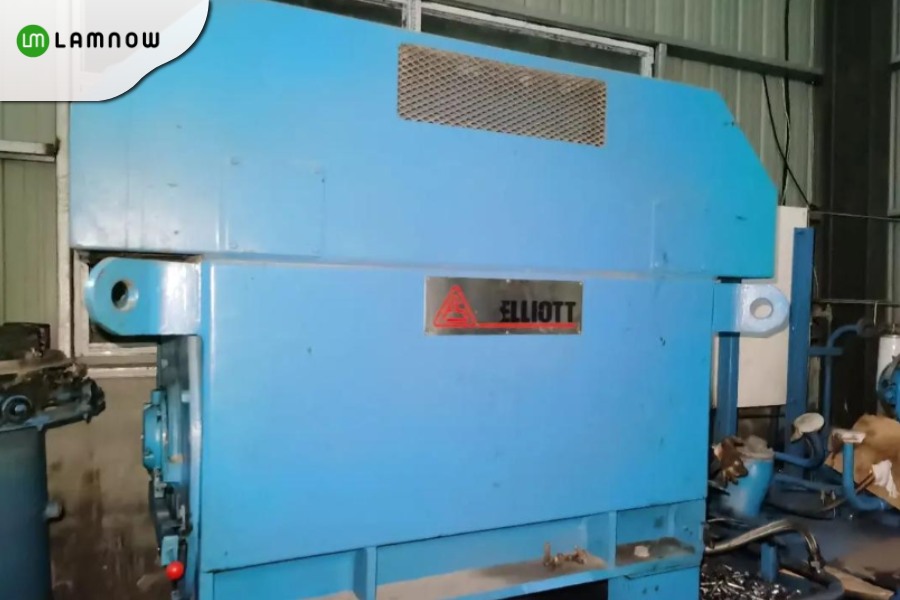
Pumps and Compressors:
High-voltage motors drive large centrifugal pumps and air compressors.
Siemens and ABB high-voltage induction motors are widely used in petrochemical compressor systems, while Shanghai Electric’s 10kV motors serve in thermal power plants for boiler fans and feed pumps.
Mining and Metallurgy:
High-voltage motors power mills, crushers, and conveyors.
WEG and Teco-Westinghouse high-voltage motors perform excellently in copper and iron ore production lines, offering high torque and durability.
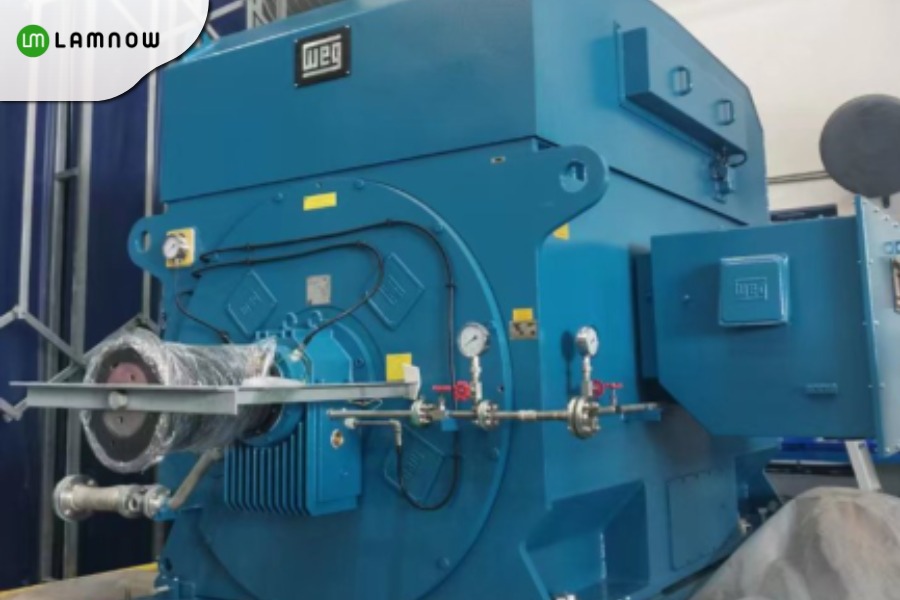
Advantage of High Voltage Generators
High Efficiency, Low Current
At the same power, high voltage motors require less current than low-voltage ones, reducing line losses and cable size while minimizing heat generation.
Ideal for High Power Motor Loads
Suitable for drives above 200 kW, high-voltage motors deliver large power output with smaller current.
Robust Structure and High Reliability
Built with F- or H-class insulation and strict manufacturing standards. They are built to last, with robust designs that can withstand demanding environments.
Low Maintenance and Simplified Systems
High voltage motors can be directly connected to high voltage grids, eliminating transformers and simplifying system design. But it has optimal performance.
Now you know how high voltage motors unleash tremendous power in large-scale equipment.
With operation voltages above 6 kV, solid structure, and superior insulation, they are widely used in wind power, mining, cement, and petrochemical industries.
Their high efficiency, low loss, and excellent reliability make them the core driving force and investment of heavy industry.
HV Motor Core Supplier — Choose Lamnow
Lamnow is a professional manufacturer of motor cores, specializing in low-voltage motor and high voltage motor stator and rotor laminations.
We use advanced laser cutting and stamping machines to produce various high-precision stator and rotor stacks. Laser cutting can achieve core diameters up to 1000 mm, and single-slot stamping supports cores up to 1250 mm.
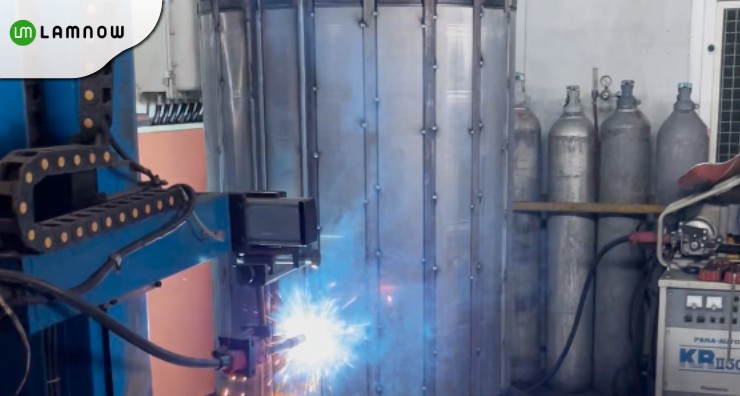
For ultra-large high voltage motor cores, we also provide segmented lamination designs.
Additionally, we supply lathe machining and rotor shaft insertion overall services.

If you have any demand or technology questions for high voltage motor cores, feel free to contact Lamnow anytime!

